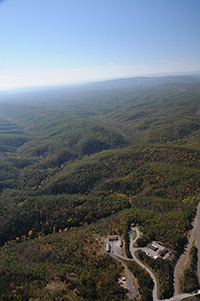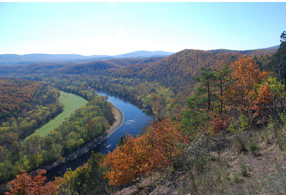Forest Management Plans
The original planning process for the 1996 Ten Year Plan included extensive opportunity for public participation, and relied on public feedback in the refinement of management goals and implementation strategies.
The current sustainable plan adheres to a similar policy. One of the benefits of the new plan format is that it will be open for continual updates as additional resource information is developed. As updates and modifications are made, the Interdisciplinary Team and Citizens Advisory Committee will review the revised plan.
 Annual Work Plans
Annual Work Plans
The Annual Work Plans for Green Ridge State Forest are formulated over a year in advance and contain all the projects to be undertaken in the areas of Special Projects, Maintenance and Operations, Recreation, Watershed Protection, Ecosystem Restoration/Protection, and Wildlife Management. In addition to the routine operations and management of the State Forest, the Annual Work Plan for Green Ridge management staff for the fiscal year. All projects and proposals within the Plans have been developed to meet one or more of the Land Management Guidelines and Objectives outlined in the Green Ridge State Forest Sustainable Management Plan including:
Forest Economy: management activities intended to maintain an economically sustainable forest and contribute to the local economy through providing forest-related employment and products.
Forest Conservation: management activities with a purpose to protect significant or unique natural communities and elements of biological diversity, including Ecologically Significant Areas, High Conservation Value Forests and old growth Forests. Old growth forest management serves to restore and/or enhance old growth forest structure and function.
 Water Quality: management activities designed to protect or improve ecological functions in protecting or enhancing water quality.
Water Quality: management activities designed to protect or improve ecological functions in protecting or enhancing water quality.
Wildlife Habitat: management activities with a purpose to maintain and enhance the ecological needs of the diversity of wildlife species and habitat types.
Recreation and Cultural Heritage: management activities with a purpose to maintain and enhance areas that serve as visual, public camping, designated trails, and other high public use areas.
Annual Work Plans